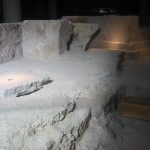THE UNIÓ MUSICAL THEATER WILL HOST THIS CONCERT NEXT SUNDAY, DECEMBER 18

The Jeju Prime Philharmonic Orchestra of South Korea will offer a concert in Llíria this coming Sunday, December 18. The performance of the international group will take place at 7:00 p.m. in the Unió Musical theatre. Admission is free until full capacity.
As explained by the Councilor for Tourism and UNESCO Creative City, Paco García, “the realization of this event is part of the collaborations and exchanges that the town carries out with the UNESCO Network of Creative Cities of Music”.
The Korean city of Jeju was designated, in 2007, the first Natural World Heritage Site designated by UNESCO, due to the presence of various spaces with exceptional natural value that has led to its being declared a Natural Monument, with a large Protection Area. Natural of Mount Halla, the lava caves of Geomunoreum and the volcanic cinder cone of Seongsan Ilchulbong, being a UNESCO World Nature Reserve.
But Jeju also has a long musical career that has been reflected in recent years with the participation of professionals from Llíria who have directed various local groups.
The island has a national university with a renowned department for music and its own Jeju National University Symphony Orchestra. The Prime Philharmonic Orchestra is a young and dynamic orchestra from the South Korean island of Jeju.
This formation, founded in 2014, has highly gifted and motivated musicians, who have graduated mainly from this university and from which various performers and teachers have come.
The Principal and Artistic Director of the Jeju Prime Philharmonic Orchestra is Hur Dae-Sik. He has studied flute and conducting at Jeju National University and Kyung-Hee University in Seoul, and has obtained his PhD from the University of North Texas in the United States.








